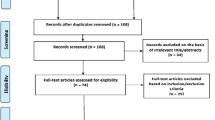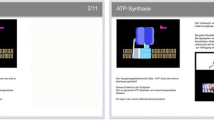Abstract
The purpose of this study was to examine the effects of a metaphorical interface on germane cognitive load in Web-based instruction. Based on cognitive load theory, germane cognitive load is a cognitive investment for schema construction and automation. A new instrument developed in a previous study was used to measure students’ mental activities of schema construction and automation supported by structural cues in a metaphorical interface environment. Eighty participants were randomly assigned to one of two types of instructional units with the same instructional content and different interface types (i.e., non-metaphorical interface and metaphorical interface). The results indicated that germane cognitive load positively affected learning performance while there was no relationship between germane cognitive load and students’ prior knowledge. A metaphorical interface enhanced learners’ germane cognitive load and learning performance, and both germane cognitive load and prior knowledge similarly contributed to learning performance. The findings provide implications for the advancement of cognitive load theory and the practice of instructional development.






Similar content being viewed by others
References
Allbritton, D. W. (1995). When metaphors function as schemas: Some cognitive effects of conceptual metaphors. Metaphor and Symbolic Activity, 10(1), 33–46.
Anderson, R. A. (2006). Exploring the art and technology of web design. Clifton Park, NY: Thomson Delmar Learning.
Barr, P., Biddle, R., & Noble, J. (2002). A taxonomy of user interface metaphors, In Proceedings of SIGCHI-NZ symposium on computer–human interaction (CHINZ 2002). Hamilton. Retrieved from http://www.mcs.vuw.ac.nz/~chikken/research/papers/chinz2002/barr_chinz2002.pdf.
Beers, P. J., Boshuizen, H. P. A., Kirschner, P. A., Gijselaers, W., & Westendorp, J. (2008). Cognitive load measurements and stimulated recall interviews for studying the effects of information and communications technology. Educational Technology Research and Development, 56(3), 309–328.
Beriswill, J. E. (1998). Analysis-based message design: Rethinking screen design guidelines. In Proceedings of the 20th national convention of the association for educational communications and technology, pp. 29–37.
Berkley, J., & Cates, W. M. (1996). Building coping skills on a firm foundation: Using a metaphorical interface to deliver stress management instruction. In Proceedings of selected research and development presentations at the 1996 national convention of the association for educational communications and technology, 15, pp. 71–79.
Cates, W. M. (1994). Designing hypermedia is hell: Metaphor’s role in instructional design. In Proceedings of selected research and development presentations at the 1994 national convention of the association for educational communications and technology, 16, pp. 95–108.
Cates, W. M. (1996). Towards a taxonomy of metaphorical graphical user interfaces: Demands and implementations. In Proceedings of selected research and development presentations at the 18th national communications and technology, pp. 101–110.
Cates, W. M. (2002). Systematic selection and implementation of graphical user interface metaphors. Computers & Education, 38(4), 385–397.
Cates, W. M., & Berkley, J. (2000) What price metaphor? Calculating metaphorical interfaces’ return-on-investment. In Proceedings of selected research and development presentations at the 2000 national convention of the association for educational communications and technology, 22, pp. 59–70.
Chalmers, P. A. (2003). The role of cognitive theory in human-computer interface. Computers in Human Behavior, 19(5), 593–607.
Cheon, J., & Grant, M. M. (2009). Are pretty interfaces worth the time? The effects of user interface types on web-based instruction. Journal of Interactive Learning Research, 20(1), 5–33.
Cheon, J., & Grant, M. M. (in press). Examining the relationships of different cognitive load types related to user interface in web-based instruction. Journal of Interactive Learning Research.
Davidson, M. J., Dove, L., & Weltz, J. (1999). Mental models and usability. Retrieved from http://www.lauradove.info/reports/mental%20models.htm.
de Jong, T., & van der Hulst, A. (2002). The effects of graphical overviews on knowledge acquisition in hypertext. Journal of Computer Assisted Learning, 18(2), 219–231.
de Koning, B. B., Tabbers, H. K., Rikers, R. M. J. P., & Paas, F. (2010). Attention guidance in learning from a complex animation: Seeing is understanding. Learning and Instruction, 20(2), 111–122.
Driscoll, M. P. (2005). The psychology of learning for instruction (3rd ed.). Boston: Pearson Education, Inc.
Firat, M., & Kakakci, I. (2010). Use of visual metaphors for navigation in educational hypermedia: Effects on the navigational performance. Journal of Educational Multimedia and Hypermedia, 19(1), 5–22.
Gadanidis, G., Sedig, K., & Liang, H. N. (2004). Designing online mathematical investigation. Journal of Computers in Mathematics and Science Teaching, 23(3), 275–298.
Gentner, D. (1983). Structure-mapping: A theoretical framework for analogy. Cognitive Science, 7, 155–170.
Gerjets, P., Scheiter, K., & Catrambone, R. (2004). Designing instructional examples to reduce intrinsic cognitive load: Molar versus modular presentation of solution procedures. Instructional Science, 32(1–2), 33–58.
Haag, B. B., & Snetsigner, W. (1993). Aesthetics and screen design: An integration of principles. In Proceedings of the 25th annual conference of the international visual literacy association, pp. 92–97. Retrieved from http://eric.ed.gov/ERICDocs/data/ericdocs2/content_storage_01/0000000b/80/26/9e/f4.pdf.
Hallahan, K. (2001). Improving public relations web sites through usability research. Public Relation Review, 27(2), 223–239.
Hamilton, A. (2000). Interface metaphors and logical analogies: a question of terminology. Journal of the American Society for Information Science, 51(2), 111–122.
Hannafin, M. J., & Hooper, S. (1989). An integrated framework for CBI screen design and layout. Computers in Human Behavior, 5(3), 155–165.
Henderson, L., Putt, I., & Coombs, G. (2002). Mental models of teaching and learning with the WWW. Auckland: Paper presented at ASCILITE conference.
Herrington, J. A. (1997). Authentic learning in interactive multimedia environments. Edith Cowan University. Unpublished doctoral thesis.
Herrington, J., Oliver, R., Herrington, T., & Sparrow, H. (2000). Towards a new tradition of online instruction: Using situated learning to design web-based units. Coffs Harbour, QLD: Paper presented at ASCILITE conference.
Hron, A. (1998). Metaphors as didactic means for multimedia learning environments. Innovations in Education and Training International, 35(1), 21–28.
Hsu, Y. C., & Boling, E. (2007). An approach for designing composite metaphors for user interfaces. Behavior & Information Technology, 26(3), 209–220.
Hsu, Y., & Schwen, T. (2003). The effects of structural cues from multiple metaphors on computer users’ information search performance. International Journal of Human-Computer Studies, 58(1), 39–55.
Hudson, W. (2000). Why metaphor is a double-edged sword. Interactions, 7(3), 11–15.
Jih, H. J., & Reeves, T. C. (1992). Mental models: A research focus for interactive learning systems. Educational Technology Research and Development, 40(3), 39–53.
Kalyuga, S., & Sweller, J. (2005). Rapid dynamic assessment of expertise to improve the efficiency of adaptive e-learning. Educational Technology Research and Development, 53(3), 83–93.
Kalyuga, S., Chandler, P., & Sweller, J. (2000). Incorporating learner expertise into the design of multimedia instruction. Journal of Educational Psychology, 92(1), 126–136.
Lakoff, G., & Johnson, M. (1980). Metaphor we live by. Chicago: University of Chicago Press.
Lang, J. (2003). Role of metaphor in multimedia curriculum design for preservice teacher professional learning. Paper presented at the annual conference of the Australian teacher education association, Melbourne. Retrieved from http://www.atea.edu.au/Conf2003Papers.htm.
Lee, J. (2007). The effects of visual metaphor and cognitive style for mental modeling in a hypermedia-based environment. Interacting with Computers, 19(6), 614–629.
Lee, S., & Boling, E. (1999). Screen design guidelines for motivation in interactive multimedia instruction: A survey and framework for designers. Educational Technology, 39, 19–26.
Lohr, L. L., & Ku, H. Y. (2003). Development of a web-based template for active learning. Quarterly Review of Distance Education, 4(3), 213–226.
Mayer, R. E. (2005). The cambridge handbook of multimedia learning. New York: Cambridge University Press.
Metros, S. E., & Hedberg, J. G. (2002). More than just a pretty (inter) face: The role of the graphical user interface in engaging elearners. Quarterly Review of Distance Education, 3(2), 191–205.
Microsoft Corporation. (1995). The windows interface guidelines—A guide for designing software. Retrieved from http://www.ics.uci.edu/~kobsa/courses/ICS104/course-notes/Microsoft_WindowsGuidelines.pdf.
Mitchell, T. J. F., Chen, S. Y., & Macredie, R. D. (2005). Hypermedia learning and prior knowledge: Domain expertise vs. system expertise. Journal of Computer Assisted Learning, 21(1), 53–64.
Moreno, R. (2004). Decreasing cognitive load for novice students: Effects of explanatory versus corrective feedback in discovery-based multimedia. Instructional Science, 32(1–2), 99–113.
Nielson, J. (2000). Designing web usability: The practice of simplicity. Indianapolis, IN: New Riders Publishing.
Norman, D. (1998). The design of everyday things. New York, NY: Doubleday.
Ohl, T. M., & Cates, W. M. (1997). Applying metaphorical interface design principles to the World Wide Web. Educational Technology, 37(6), 25–38.
Otter, M., & Johnson, H. (2000). Lost in hyperspace: Metrics and mental models. Interacting with Computers, 13(1), 1–40.
Paas, F., & van Merrienboer, J. J. G. (1993). The efficiency of instructional conditions: An approach to combine mental effort and performance measures. Human Factors, 35, 737–743.
Paas, F., Tuovinen, J. E., Tabbers, H., & Van Gerven, P. W. M. (2003). Cognitive load measurement as a means to advance cognitive load theory. Educational Psychologist, 38(1), 63–71.
Paas, F., Tuovinen, J. E., Tabbers, H., van Merrienboer, J. J. G., & Darabi, A. A. (2005). A motivational perspective on the relation between mental effort and performance: Optimizing learner involvement in instruction. Educational Technology Research and Development, 53(3), 25–34.
Parizotto-Ribeiro, R., & Hammond, N. (2005). Does aesthetics affect the users’ perceptions of VLEs? Paper presented at the 12th international conference on artificial intelligence in education, Amsterdam. Retrieved from http://www.informatics.sussex.ac.uk/users/gr20/aied05/finalVersion/RParizotto.pdf.
Pearrow, M. (2007). Web usability handbook (2nd ed.). Boston, MA: Charles River Media.
Plass, J. L. (1998). Design and evaluation of the user interface of foreign language multimedia software: A cognitive approach. Language Learning & Technology, 2(1), 40–53.
Renkl, A., Atkinson, R. K., & Grosse, C. S. (2004). How fading worked solution steps works—A cognitive load perspective. Instructional Science, 32(1–2), 59–82.
Rikers, R. M. J. P., Van Gerven, P. W. M., & Schmidt, H. G. (2004). Cognitive load theory as a tool for expertise development. Instructional Science, 32(1–2), 173–182.
Shneiderman, B., & Plaisant, C. (2005). Designing the user interface: Strategies for effective human-computer interaction. Boston, MA: Addison-Wesley.
Swan, K. (2001). Virtual interaction: Design factors affecting student satisfaction and perceived learning in asynchronous online courses. Distance Education, 22(2), 306–331.
Swan, K. (2004). Relationships between interactions and learning in online environments. Retrieved from http://www.sloan-c.org/publications/books/interactions.pdf.
Sweller, J., & Chandler, P. (1994). Why some material is difficult to learn. Cognition and Instruction, 12(3), 185–233.
Sweller, J., van Merrienboer, J. J. G., & Paas, F. (1998). Cognitive architecture and instructional design. Educational Psychology Review, 10(3), 251–296.
Szabo, M., & Kanuka, H. (1998). Effects of violating screen design principles of balance, unity and focus on recall learning, study time and completion rates. Journal of Multimedia and Hypermedia, 8(1), 23–42.
van Dam, A. (2000). Beyond WIMP. IEEE Computer Graphics and Applications, 20(1), 50–51.
Van Gerven, P. W. M., Paas, F., Van Merrienboer, J. J. G., Hendriks, M., & Schmidt, H. G. (2003). The efficiency of multimedia learning into old age. British Journal of Educational Psychology, 73(4), 489–505.
van Merrienboer, J. J. G., & Ayres, P. (2005). Research on cognitive load theory and its design implications for e-learning. Educational Technology, Research and Development, 53(3), 5–13.
van Merrienboer, J. J. G., & Sweller, J. (2005). Cognitive load theory and complex learning: Recent developments and future directions. Educational Psychology Review, 17(2), 147–177.
Vogt, C. (2001). The design elements in developing effective learning and instructional web-sites. Academic Exchange Quarterly, 5(4), 40–47.
Williams, R., Tollett, J., & Rohr, D. (2002). Robin Williams web design workshop. Berkeley, CA: Peachpit Press.
Author information
Authors and Affiliations
Corresponding author
Rights and permissions
About this article
Cite this article
Cheon, J., Grant, M.M. The effects of metaphorical interface on germane cognitive load in Web-based instruction. Education Tech Research Dev 60, 399–420 (2012). https://doi.org/10.1007/s11423-012-9236-7
Published:
Issue Date:
DOI: https://doi.org/10.1007/s11423-012-9236-7




